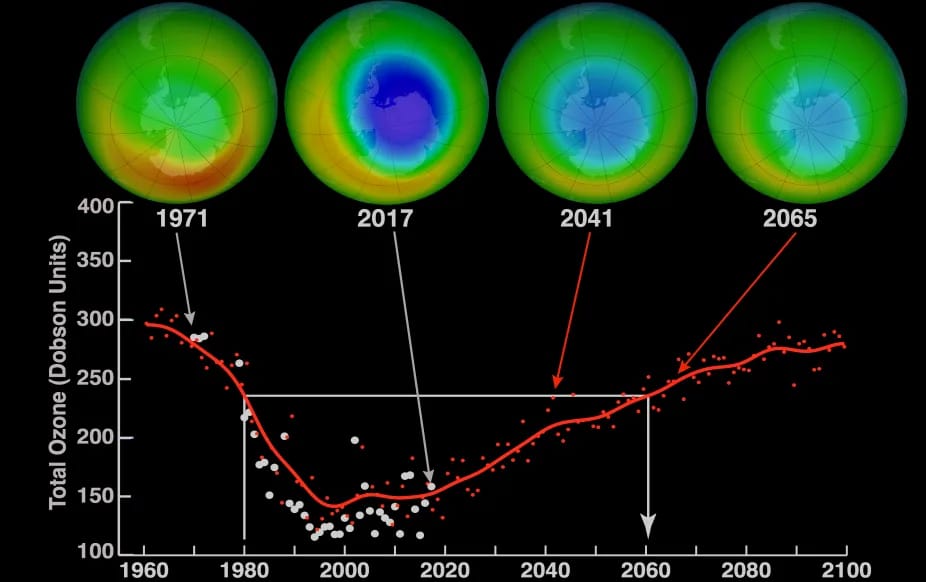One of Us Is Lying; One of Us Is Unseen

Dawn of Unseen Realities
Is he destined to be crushed under the weight of his own dreams and ambitions? Perhaps. But as all who know him can attest, Y.S.emre, the lost child of Virginia, defied fate and carved his own path, rewriting his future. I'm worried because I'm not worried about my upcoming Cambridge examination. But let's set that aside for today—we're about to dive into the world of unexpected quantum realities.
There are countless massive objects, beings, and truths that leave us, humans, in awe. But for the first time in history, something we can’t even see—something smaller than viruses, atoms, protons, and neutrons—is set to bring a profound change to the global village.
You've probably heard that even small changes can make a big difference. This is the perfect example—not just for the quantum universe but also for us A-level students preparing for our upcoming exams. Study a little daily, but do so with focus, honesty, and integrity.
Inception of a Quantum Revolution: From Laughter to Discovery
Some pretentious nerds at the prestigious MIT burst into collective laughter in April 2007 while reading the title of an article: "Evidence for Wavelike Energy Transfer Through Quantum Coherence in Photosynthetic Systems," which boldly claimed: Plants Are Mini Quantum Computers. Yet, this very study would soon challenge their scepticism, revealing the profound role of quantum mechanics in nature.
I often wonder about the whispers of their exact discussion—words exchanged in the very month and year of my birth. Perhaps it’s no coincidence that I find myself drawn to quantum biology; after all, we share the same origin in time.
As I mentioned earlier, small changes can make a big difference, and in the same way, those plant cells outsmarted human minds. They roasted those who laughed at them, dismissing them as insignificant because of their tiny size compared to the grandeur of the human mind. What they didn't realize was that the future belonged to the plants. They were unaware that these seemingly small and simple systems, driven by quantum mechanics, were poised to revolutionize our understanding of biology and energy transfer. The future was theirs all along.
The Quantum Efficiency Behind Photosynthesis
To understand what that article claimed, we first need to grasp the immense process that fuels life in the universe: photosynthesis. This fundamental biological process is how plants, algae, and some bacteria convert light energy, usually from the sun, into chemical energy stored in glucose.
Photosynthesis is essential for life on Earth because it not only produces oxygen but also serves as the foundation of the food chain, providing energy for nearly all living organisms.
However, what makes photosynthesis particularly fascinating is its efficiency. It's not just a straightforward process of converting light to energy; it's a complex, finely tuned mechanism that operates at the molecular level. And this is where the quantum aspect comes into play, as the study in the article mocked by MIT physicists suggests.
How Plants Harness Light in Ways We Can't See?
In plants, light energy is absorbed by pigments like chlorophyll, which excites electrons and triggers reactions that convert sunlight into chemical energy. This process is more complex than we thought—quantum coherence, a phenomenon from quantum mechanics, helps energy move through plant cells in ways that seem impossible by classical physics.
The article suggests that plants use quantum mechanics to improve the efficiency of energy transfer during photosynthesis, allowing molecules to exist in multiple states at once and capture energy more effectively.
This challenges traditional views and opens up exciting possibilities for quantum biology, potentially leading to breakthroughs in energy generation and sustainability.
To simplify, it’s like studying physics, math, or advanced subjects while enjoying it as if watching a movie or reading a novel—experiencing multiple things at once, like a wave.
Two-Dimensional Fourier Transform Electron Spectroscopy (2D-FTES) and Quantum Beats
Techniques like Two-Dimensional Fourier Transform Electron Spectroscopy (2D-FTES) offer an advanced approach to understanding how energy transfers in plant systems. This tool maps the energy states of molecules by analyzing electron interactions, helping scientists capture the subtle quantum effects at play during photosynthesis.
Using 2D-FTES, researchers can observe how energy moves efficiently through plant cells, revealing the quantum coherence responsible for this process. The findings challenge previous assumptions and provide deeper insight into how quantum mechanics enhances biological systems.
Additionally, quantum beats—the oscillations between quantum states that occur when light interacts with matter—further illuminate energy transfer in plants. These beats arise from interference between quantum states, providing clues about how energy is efficiently transported across the photosynthetic system.
By studying these phenomena, scientists can better understand the precise quantum mechanisms that enable plants to capture sunlight so effectively, offering new perspectives on quantum biology’s potential to revolutionize energy generation and sustainability.
Dusk of the Known: Embracing Quantum's Unseen Forces
To conclude, we've journeyed through the fascinating intersection of quantum mechanics and the natural world, particularly in the realm of photosynthesis. What once seemed like a simple process of energy conversion is now revealed to be a complex, quantum-enhanced system, where tiny particles move through plant cells with remarkable efficiency, defying classical physics.
Plants, seemingly humble in their size and scope, harness the power of quantum coherence to capture and store energy in ways that challenge our understanding of biology. The discovery that plants operate like "mini quantum computers" opens doors to potential breakthroughs in energy generation, sustainability, and quantum biology.
Just as the smallest changes at the quantum level can reshape our understanding of nature, so can our approach to studies and life. The same dedication and focus we apply to learning, even in the face of daunting exams or uncertain futures, can drive us to make a big impact.
In the end, it’s not the size or scale of the task, but the wisdom to understand how every small part fits into the greater whole. Much like quantum particles, we too are part of a larger system—our personal worlds intertwining with the scientific and social realms.
And speaking of personal worlds, much like quantum coherence in plants, my own life has been influenced by seemingly small, invisible connections—be it the casual interactions with friends or the quiet reflections in moments of solitude. Though I may not fully understand the profound forces shaping my future, I trust that, like the plants, there is an order to it all. And just like quantum mechanics, my social life too is full of strange and unexpected influences, quietly aligning to bring about changes that might one day surprise us all.
In this journey, as we study for exams, explore new scientific horizons, or even ponder the mysteries of our own social lives, we learn that sometimes, the smallest forces make the biggest impacts. The question remains: are we ready to embrace those tiny changes and step into the future with the same openness and curiosity that quantum biology demands? Only time will tell.
References
- Evidence for Wavelike Energy Transfer Through Quantum Coherence in Photosynthetic Systems: Nature.com
- Quantum Secrets of Photosynthesis Revealed: LBL.gov
- Two-Dimensional Electronic Spectroscopy from First Principles: AIP Publications
- A Little Coherence Photosynthetic Light Harvesting: Oxford Academic
- Quantum Coherence Accelerates Photosynthetic Energy Transfer: Springer
Similar Post You May Like
-

CFCs, HFCs and their long, troubled history
At its peak, the ozone hole covered an area 7 times larger than the size of Europe, around 29.9 million km2, and was rapidly expanding
-

The Origin of Universe: Deciding point where it all began!
Let us unravel and surf through the ideas throughout ages to understand what the universe and its origin itself was to its inhabitants across history.
-

The Artemis Program
Inspired by the Greek goddess of the Moon, twin sister to Apollo, the artimis program was named on 14 May 2019 by Jim Bridenstine.






